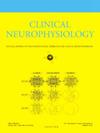立体脑电图视角下睡眠相关性癫痫的临床与研究进展
IF 3.6
3区 医学
Q1 CLINICAL NEUROLOGY
引用次数: 0
摘要
睡眠与癫痫之间复杂的相互作用已引起越来越多的关注,而立体脑电图(SEEG)已成为研究其潜在病理生理机制的关键工具。这篇综述强调了过去二十年SEEG研究的主要贡献,重点是睡眠相关的运动性癫痫(SHE)。被认为是额叶起源的一种疾病,SHE现在被认为是一种以网络为基础的癫痫,更广泛地涉及皮质区域。非快速眼动(NREM)睡眠中的睡眠不稳定性,以循环交替模式(CAP)为指标,以及双稳定性的增加,成为癫痫样放电的关键促进因素。相反,快速眼动(REM)睡眠,特别是其相亚状态,对癫痫活动有很强的抑制作用。SEEG在表征这些机制和识别新的生物标志物方面发挥了重要作用,包括交叉频率耦合和皮层不稳定性的网络水平测量。这些发现不仅对诊断和手术靶向有意义,而且对神经调节和基于状态的治疗方法的发展也有意义。展望未来,SEEG与先进计算工具的整合为实时脑状态映射和癫痫发作风险分层提供了新的途径。通过将临床神经生理学与系统神经科学相结合,SEEG为在睡眠的动态背景下推进对癫痫的理解提供了一个独特的平台。本文章由计算机程序翻译,如有差异,请以英文原文为准。
Sleep-related epilepsy through the lens of stereo-EEG: Clinical and research update
The complex interactions between sleep and epilepsy have drawn increasing attention, and stereo-electroencephalography (SEEG) has become a pivotal tool for investigating their underlying pathophysiological mechanisms. This review highlights key contributions from SEEG studies over the past two decades, with a focus on Sleep-Related Hypermotor Epilepsy (SHE). Considered a disorder of frontal lobe origin, SHE is now recognized as a network-based epilepsy with a broader involvement of cortical regions. Sleep instability in Non-Rapid Eye Movement (NREM) sleep, indexed by the cyclic alternating pattern (CAP), and increased bistability, emerge as critical facilitators of epileptiform discharges. In contrast, rapid eye movement (REM) sleep, particularly its phasic substate, exerts a strong suppressive effect on epileptic activity. SEEG has been instrumental in characterizing these mechanisms and identifying novel biomarkers, including cross-frequency coupling and network-level measures of cortical instability. These findings have implications not only for diagnosis and surgical targeting but also for the development of neuromodulatory and state-based therapeutic approaches. Looking forward, the integration of SEEG with advanced computational tools offers new avenues for real-time brain-state mapping and seizure risk stratification. By bridging clinical neurophysiology with systems neuroscience, SEEG provides a unique platform for advancing the understanding of epilepsy within the dynamic context of sleep.
求助全文
通过发布文献求助,成功后即可免费获取论文全文。
去求助
来源期刊

Clinical Neurophysiology
医学-临床神经学
CiteScore
8.70
自引率
6.40%
发文量
932
审稿时长
59 days
期刊介绍:
As of January 1999, The journal Electroencephalography and Clinical Neurophysiology, and its two sections Electromyography and Motor Control and Evoked Potentials have amalgamated to become this journal - Clinical Neurophysiology.
Clinical Neurophysiology is the official journal of the International Federation of Clinical Neurophysiology, the Brazilian Society of Clinical Neurophysiology, the Czech Society of Clinical Neurophysiology, the Italian Clinical Neurophysiology Society and the International Society of Intraoperative Neurophysiology.The journal is dedicated to fostering research and disseminating information on all aspects of both normal and abnormal functioning of the nervous system. The key aim of the publication is to disseminate scholarly reports on the pathophysiology underlying diseases of the central and peripheral nervous system of human patients. Clinical trials that use neurophysiological measures to document change are encouraged, as are manuscripts reporting data on integrated neuroimaging of central nervous function including, but not limited to, functional MRI, MEG, EEG, PET and other neuroimaging modalities.
 求助内容:
求助内容: 应助结果提醒方式:
应助结果提醒方式:


